MONTENEGRO
OVERVIEW: Day 1: Arrival Podgorica
|
Detailed Itinerary
Day 1: Arrive Podgorica, Montenegro
Upon arrival to Podgorica airport you will be met by our representative and transfer to your hotel.
Overnight in Podgorica – Hotel Ambasador
Day 2: Podgorica - Monastery Morača - Biograd Lake - Tara Canyon - Žabljak
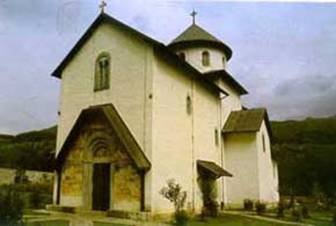 Montenegro itself is very old but it became the youngest country in Europe by voting for independence on 21 May 2006.
Montenegro itself is very old but it became the youngest country in Europe by voting for independence on 21 May 2006.
We will start our day with a tour of the capital of Montenegro – Podgorica. The town is situated on the crossroads of several very important roads of this area in the vicinity of the rivers Zeta and Morača. Lake Skadar is also nearby, and the Adriatic coast is less than 100km away. This area has contained human habitation dating back to prehistory. In Ilirian times was the settlment called Duklja, very large for its time, and many new towns were formed when the Slavs migrated to these territories in the 6th century.
The name Podgorica is mentioned for the first time in 1326. In 1946 the name was changed to Titograd and it became the capital of the Republic of Montenegro. The name Podgorica returned to the town in 1992. Today this is the largest town in the country and it is a cultural, social and political center. We will see Sahat Tower, St. George Church and, time permitted, the Archaeological Museum.
After a short drive to the North we will arrive to the Monastery Morača, made famous by its beautiful icons, frescos, and many books and manuscripts.
The Morača Monastery is one of the most beautiful medieval monuments of Montenegro. It was built in 1252 by Stefan, son of King Vukan and Nemanja's grandson.
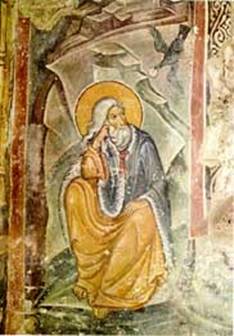 It is situated in a picturesque canyon of the Morača River. The monastery complex consists of the cathedral Ascend of mother of God (Uspenje Bogorodice), the small church of Saint Nicolas (Sveti Nikola), and a building for accommodation. The churchyard of the monastery is enclosed by a high wall with two gates.
It is situated in a picturesque canyon of the Morača River. The monastery complex consists of the cathedral Ascend of mother of God (Uspenje Bogorodice), the small church of Saint Nicolas (Sveti Nikola), and a building for accommodation. The churchyard of the monastery is enclosed by a high wall with two gates.
In addition to architecture, its frescoes represent a special significance. Only a small portion of the original painting from the 13th century was preserved in "djakonikon", where the compositions from the life of Prophet Ellias (prorok Ilija) are singled-out for their monumentality and strength of expression. The other part of the frescoes suffered in the first half of the 16th century, when the Turks devastated the Monastery.
The refurbished Monastery was illuminated again by anonymous painters in 1574.
From the once wealthy Monastery Treasury, there are now only a few significant ritual objects and liturgical books.
Continuing our journey north, we will first make a short stop at Biogard Lake. This is a National Park protected by law since 1872 by King Nikola, and is one of the last three virgin woods left in Europe. Many trees are more than 500 years old and 40 – 50 m high. The park contains a vast variety of different flora and fauna, while the central attraction is a large glacial lake.
In the afternoon we will drive through the canyon of river Tara, a unique rival to the Grand Canyon of Colorado. It is part of the National Park of Durmitor and is a UNECSO site.
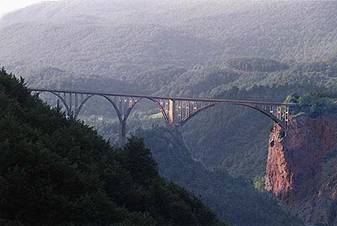 River Tara has its source in the mountains at the northern part of the country and runs 140km before it joins river Piva, forming one of the largest and most rich rivers of the Balkans. For centuries, Tara eroded the soft limestone, forming a spectacular gorge, measuring 82 km long and in some places 1300m deep, making this the second largest gorge in the world.
River Tara has its source in the mountains at the northern part of the country and runs 140km before it joins river Piva, forming one of the largest and most rich rivers of the Balkans. For centuries, Tara eroded the soft limestone, forming a spectacular gorge, measuring 82 km long and in some places 1300m deep, making this the second largest gorge in the world.
We will end our day by arriving to Žabljak, a small village on the top of Durmitor Mountain, which lies at the very center of this vast and wonderful National Park. Zabljak is located at 1456 m above sea level, which make it the highest town in the Balkans. It is surrounded by 23 hill tops, the highest of which is 2300m. Within the territory of the National Park there are 17 glacial lakes, known as the “eyes of the mountains “, the most famous being Black Lake.
Ovenight Zabljak – Hotel Ski 4* (B)
Day 3: Žabljak - Monastery Ostrog – Cetinje - Kotor
Our first stop of the day will be Monastery Ostrog. It is placed like an eagles nest hanging from a cliff, high up from the road. This monastery was, and still is, a place of many pilgrims, as it houses the remains of St.Vasilije Ostrozki, miracle worker and healer of both body and soul. It was founded by Vasilije, a high priest form Herzegovina in the 17th century. Vaslilije is buried here, and he was later canonized as a saint with magical healing powers. The monastery was renovated in 1923-1926 after a devastating fire, which luckily spared the main treasures of the Monastery. These are the Church of St. Vavedelja, with its fresco paintings from the end of the 17th century, and the church of St. Cross, located in the upper monastery level, also with exceptional frescos. This monastery attracts believers of Orthodox, Catholic and Muslim fates, as it is believed that St. Vasilije still has its magic healing 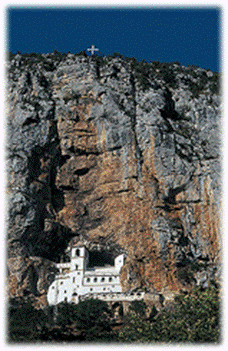 power.
power.
The road coming down from the mountain top will take us to Cetinje, once, in the time of Njegos, a capital of Montenegro. It doesn’t have a strong fort like many other important capitals from its time, as nature blessed this place with natural stone protections. The town was founded in 1482, when Ivan Crnojević, the last ruler of the medieval country of Zeta, built here a palace for himself as well as a church. Cetinje stayed the heart and soul of Montenegro all the way up to WW1. In Cetinje we will visit the royal palace of King Nikola II, the last King of Montenegro. The palace contains both a beautiful small museum as well as the Monastery of St. Petar.
A breathtaking drive up to the Mount of Lovcen will take us to the Mausoleum of Peter II Petrović - Njegoš, an absolute pride of the people of Montenegro. Njegoš was ruler of the country in the second half of the 19th century. He was also the head of the Orthodox Church and a leading poet and writer whose achievements are still taught in the schools of Sebia and Montenegro. The impressive monument at the top of Mt. Lovćen, where Njegoš is resting now, is decorated with a statue done by the famous Croatian sculptor Ivan Mestrović.
Overnight Kotor - Hotel Marija. (B)
Day 4: Kotor – Herceg Novi – Boka Kotorska - Budva
Kotor, a town museum, (UNESCO site), was inhabited even at the times of the Illyrians and Romans. However, our morning walk through the city will take us back to medieval times, as most of the monuments we can observe now are from the 14th to 18th centuries. The city is surrounded by strong walls, a renaissance tower stands on the main square, and there are numerous churches and lovely houses still remaining. We will see the Cathedral of St. Tripuna, St. Luka Church, St. Mihail Church, and many more.
After a short ferry ride crossing the Boka Bay, we will visit Herceg Novi. We will go for a walk through the narrow streets of the medieval town, which was founded by the Bosnian King Tvrdko in 1382. The town played a very important role in the trade and economy of whole area in the 14th and 15th centuries, even after it was given to the Turks at the end of the 15th century. The town was ruled at times by Venice, Austria-Hungary, Russia, and France before it was finally given to Montenegro in 1918. We will see the city walls, the main western entrance, the Sahat Kula tower, then Kanali Kula, also known as the Bloody Tower, as it was used as a prison during the times of Ottoman rule. We will also see Forte Mare, a citadel from Venetian times, as well as the church of St. Archangel Mihail.
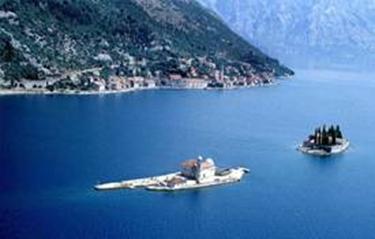 In the afternoon we will enjoy a marvelous drive around beautiful Boka Kotorska Bay, passing by many old fishing villages, churches, monasteries, marinas and beaches.
In the afternoon we will enjoy a marvelous drive around beautiful Boka Kotorska Bay, passing by many old fishing villages, churches, monasteries, marinas and beaches.
Budva is one of the oldest inhabited places in the area, known since Illyrian times. The town of Budva that we can see now is medieval and is definitely the most attractive tourist place on the Riviera. Budva has a fortified old part of the town with the typical architecture of narrow streets and stone buildings placed around the main cathedral. This area is now used as a gathering place for tourists, containing many shops and taverns. Budva also has several attractive beaches and hotels.
Overnight Budva - Hotel Avala. (B)
Day 5: Budva departure
After breakfast will be the transfer to the airport for your flight home. (B)
B - breakfast L – lunch D – dinner
All hotels are carefully chosen for their character or best central location or they are simply the only option at certain destinations. All of them can be changed on a request. The categories mentioned by the hotel names are according to the local standards and sometimes do not reflect to Western standards
Trip organized by: “BALKAN EXPERT” d.o.o. license no. OTP 54/2013
Tour available with general condition of travel of “BALKAN EXPERT”






